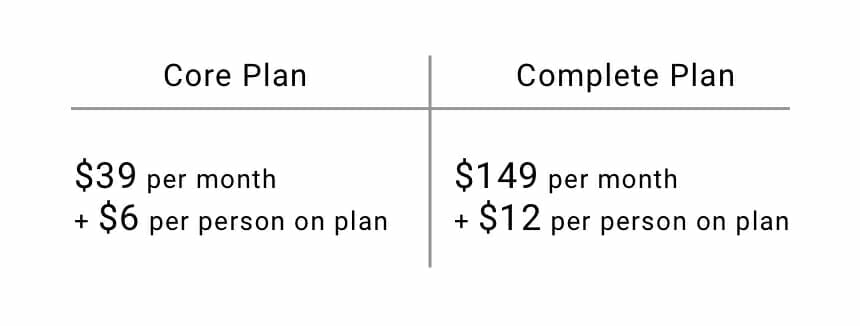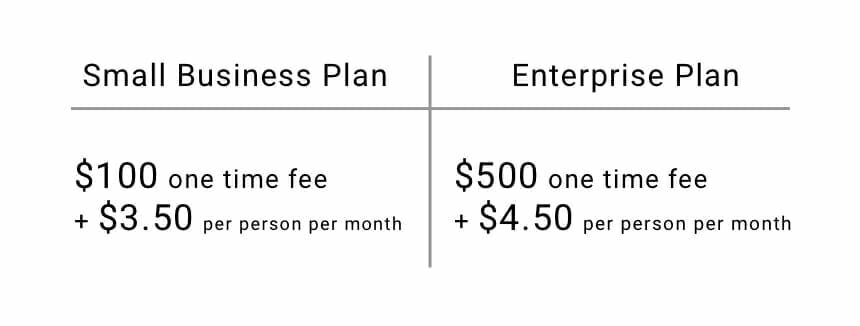Improving your company’s productivity with an enterprise app
Every business stands to boost their employee productivity, and therefore their revenue through the integration of their internal systems with an enterprise platform. The development of a true enterprise platform doesn’t just mean an app your employees can access via their smartphone – in essence, enterprise platforms are designed with the purpose of optimizing your work processes, systems, and communication.
There’s never been a better time to deploy your very own enterprise app – AI enhanced analytical services are more affordable than ever before, and industry legacy systems are quickly getting outpaced by their big-data-optimized counterparts – soon, companies that don’t make use of their own enterprise platform will find their speed as a company lagging behind competition, and their employees leaving in favor of a company more engaged with its workforce.
The impact of enterprise app deployment
According to a report from software giant Adobe, companies that invest in an enterprise platform see a 35% ROI. A substantial number of companies reported increased productivity (51%), as well as better employee communication (47%), and reduced operating costs (31%).
Numbers like these are nothing to ignore – which is why, according to the same report, 67% of businesses are using an enterprise app. Many of the same problems enterprise apps help to alleviate are widespread concerns throughout different industries: 55% of companies site the need for improved communication, and 54% of companies struggle to keep up with their ever growing mobile workforce.
Enterprise apps, are, of course, the best tool for improving employee communications and connectedness – whether in the office or out in the field.
Productivity through connectivity
Over half of the companies from this report acknowledge that staying connected with their employees out in the field is a prescient issue, and according to a poll from Gallup, 70% of the workforce is disengaged – reasons reported include:
- Lack of feedback or direction from their manage
- Lack of socialization with their team
- Lack of understanding of company mission and values
- Lack of proper communication between the employee and manager
When you’re an employee out in the field doing maintenance on an HVAC system or switch hub, or a business developer building relationships with potential clients, it’s easy to feel detached from the company you work for.
It’s even easier to fall out of the loop – today’s business environment is one of continuous change, every minute of every day. A business developer needs to know the latest market forecast based on stock data, the latest environmental regulations for building permits, if the potential client’s favorite team is playing that week.
Knowing the fine details your clients will care about is key to driving sales – and no business developer has the time to keep up with all of these data points for every potential client. Building client profiles based on specific verticals that automatically aggregate pertinent data is the most efficient method of keeping your business developers who are out in the field continuously on top of their game – and continuously impressing clients with their personalized conversations and service.
Enterprise systems do more than keeping your employees in the loop; they are highly efficient at tracking and organizing physical inventory as well. Via an enterprise platform your sales, service, and accounting departments can view the same inventory data in real time. Enterprise systems are built to work within your already existent environment, and can therefore connect the individual systems these departments use.
For instance, if your service department sells an item to a customer at a store, your accounting team will be notified of the sale immediately before submitting a new revenue report – just as your sales manager is made aware of the change in the item lot size before shaking hands with a client who wants the same item.
Enterprise systems don’t just connect individual departments’ ability to manage inventory – it also helps your company predict when sales will happen, and when the optimal time to order more inventory will be, based on patterns that are recognizable through big data analytics. When you can optimize your ordering times, you maximize your inventory turnaround, and increase your ability to manage more product, or more types of products.
Big data is the key to optimization
When combined with AI, analytics, and machine learning, big data gives enterprises the information they need in order to stay a step ahead of their competition through inferred business intelligence.
Overwhelmingly, throughout recent years, the vast majority of data that has been created is classified as “unstructured” data – meaning it is data found in documents like emails, recordings, telecommunications, video – and only 0.5% of it has been analyzed.
Enterprises, unsurprisingly, sit on a proverbial mountain of this unstructured data – and via predictive analytics and other forms of data aggregation systems, these companies can access and analyze big data more intricately and faster than ever before.
Through big data, companies can recognize patterns that interrupt workflow and productivity that might otherwise be unrecognizable without viewing the problem with the scope big data analytics makes possible.
Take, for instance, the decision of UPS to not make left turns; they invested in a software that mapped the United States (as well as most of the world), in order to nearly eradicate left turns from their parcel delivery truck routes. This decision ended up saving the company over 20 million gallons of fuel every year. Without big data, creating these avenues for efficiency is impossible, or less efficient than it would be with big data integration.
Venture ahead via enterprise platforms
Improving your company’s productivity requires more than just a mobile app – a truly integrated system must work within your enterprise environment as soon as it is deployed. For more about proper deployment, visit our blog on the topic: Enterprise app development.
An enterprise platform gives your company the ability to improve productivity, communications, systems management, and employee loyalty via one system – and simultaneously gives you a leg up on your competition.



